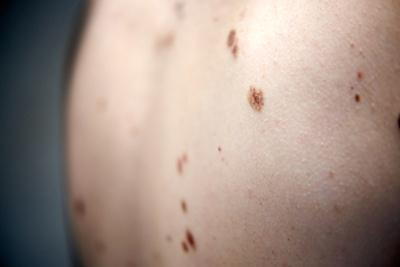The Connection Between Moles and Melanoma: Understanding the Risks
posted: Apr. 17, 2024.

The team of skin doctors at the Atlanta Center for Dermatologic Diseases helps patients get to their healthiest and best-looking skin. We treat moles in Sandy Springs, Roswell, Alpharetta, and Cumming, GA, to stop the spread of melanoma.
What Are Moles?
A mole is a dark spot on the skin made of pigment-producing skin cells called melanocytes. Skin cancer can form in any layer of skin cells, and basal and squamous cell cancers are more commonly diagnosed than melanomas. However, melanoma is more deadly because it spreads more aggressively.
The majority of moles we remove are due to skin cancer risks, but your dermatologist can also remove bothersome moles. If you have a mole that always rubs against your clothing or other skin and causes discomfort, you can talk to your dermatologist about removal.
What Is The Connection to Melanoma?
Most people have several moles and many moles are harmless. So how do you know which moles you should be concerned about? The American Academy of Dermatology has a published guide on how to identify a potentially harmful mole, with the helpful acronym ABCDE:
- Asymmetrical - If you notice one half of a mole does not match the other half in size, shape or color, have your dermatologist examine it.
- Border - The border of a mole can tell you if it's a normal growth. If the edges of a mole look irregular, jagged or poorly defined, show your dermatologist.
- Color - Look for variations in the color of a mole and show your doctor if the mole is not the same color throughout.
- Diameter - If a mole is greater than 6 millimeters across your dermatologist should determine if it is cancerous.
- Evolving - When you notice a mole changing in any way, size, shape, or color, make an appointment.
Early diagnosis and excision are essential to keep melanomas from spreading. The best way to manage your risk is by using SPF daily, examining your moles monthly at home, and keeping annual appointments with your dermatologist.
Make an Appointment Now
We treat patients with moles in Sandy Springs, Roswell, Alpharetta, and Cumming, GA. Manage your risk of skin cancer by seeing your dermatologist regularly. Contact the Atlanta Center for Dermatologic Diseases for an examination of your moles at (404) 252-4333 for the office in Sandy Springs, GA, (770) 751-1133 for the office in Roswell, GA, (770) 664-5225 for the office in Alpharetta, GA, and (770) 844-1902 for the office in Cumming, GA.
